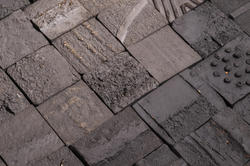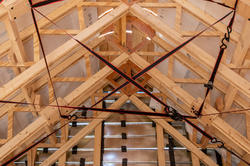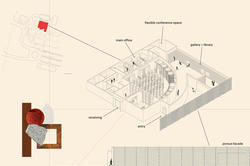Assistant Professor of Architecture Amelyn Ng presents a collaborative project and panel discussion focused on networks of salvage and design for disassembly.
Architecture Students at RISD Look to the Past to Solve Present-Day Problems
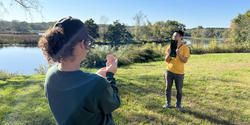
Students in a fall Architecture studio are designing buildings that harness the power of the sun using ideas and technology developed hundreds of years ago. Led by faculty member Laura Briggs BArch 82, Solar Trajectories invites students to, in Briggs’ words, “dig into knowledge from a pre-petroleum world to design a new vision for our post-petroleum future.”
In preparation for their final design projects, students have been delving into solar energy research of the past, such as the solar parabolic disc, which uses a reflector to focus sunlight onto a central receiver where the energy is absorbed and converted into heat. “We have been looking at early designs based on a long and mostly forgotten history of spectacular experiments with mirrors, sun and steam, including those of French scientist Felix Trombe,” Briggs says.
Trombe experimented with concentrating ambient energy at a large scale, creating a solar furnace with the capacity to fuse rare earth metals. Using only mirrors to reflect sunlight, he was able to concentrate the energy of 1,000 suns to attain temperatures of more than 6,000 degrees Fahrenheit.
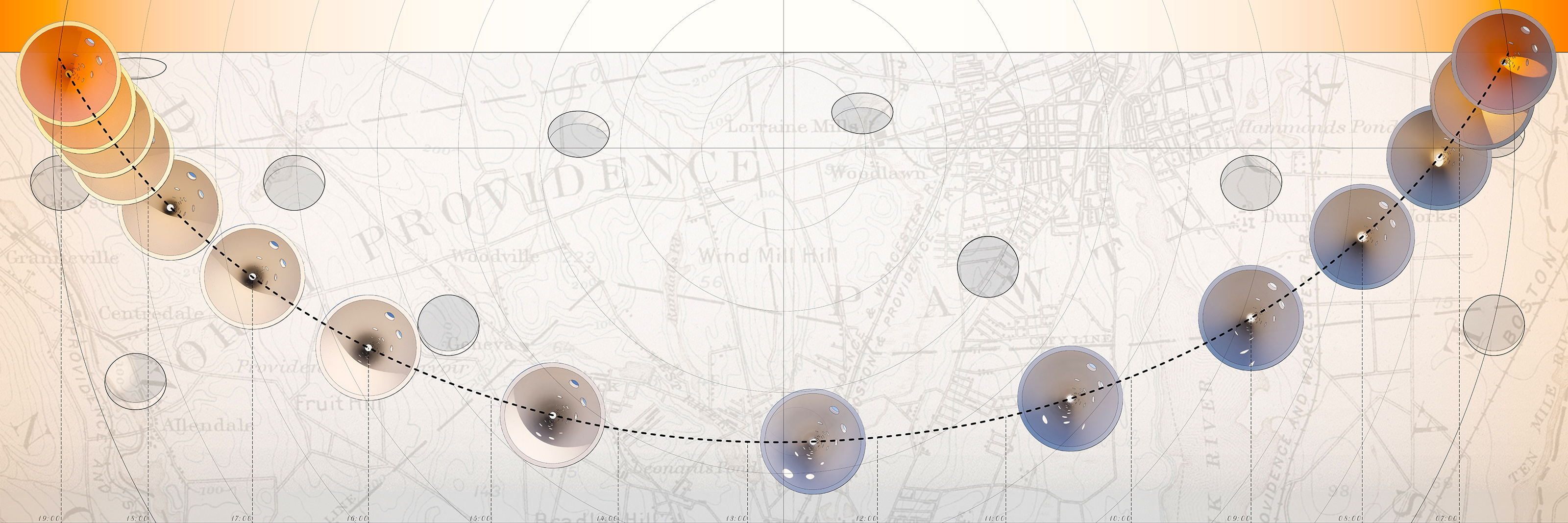
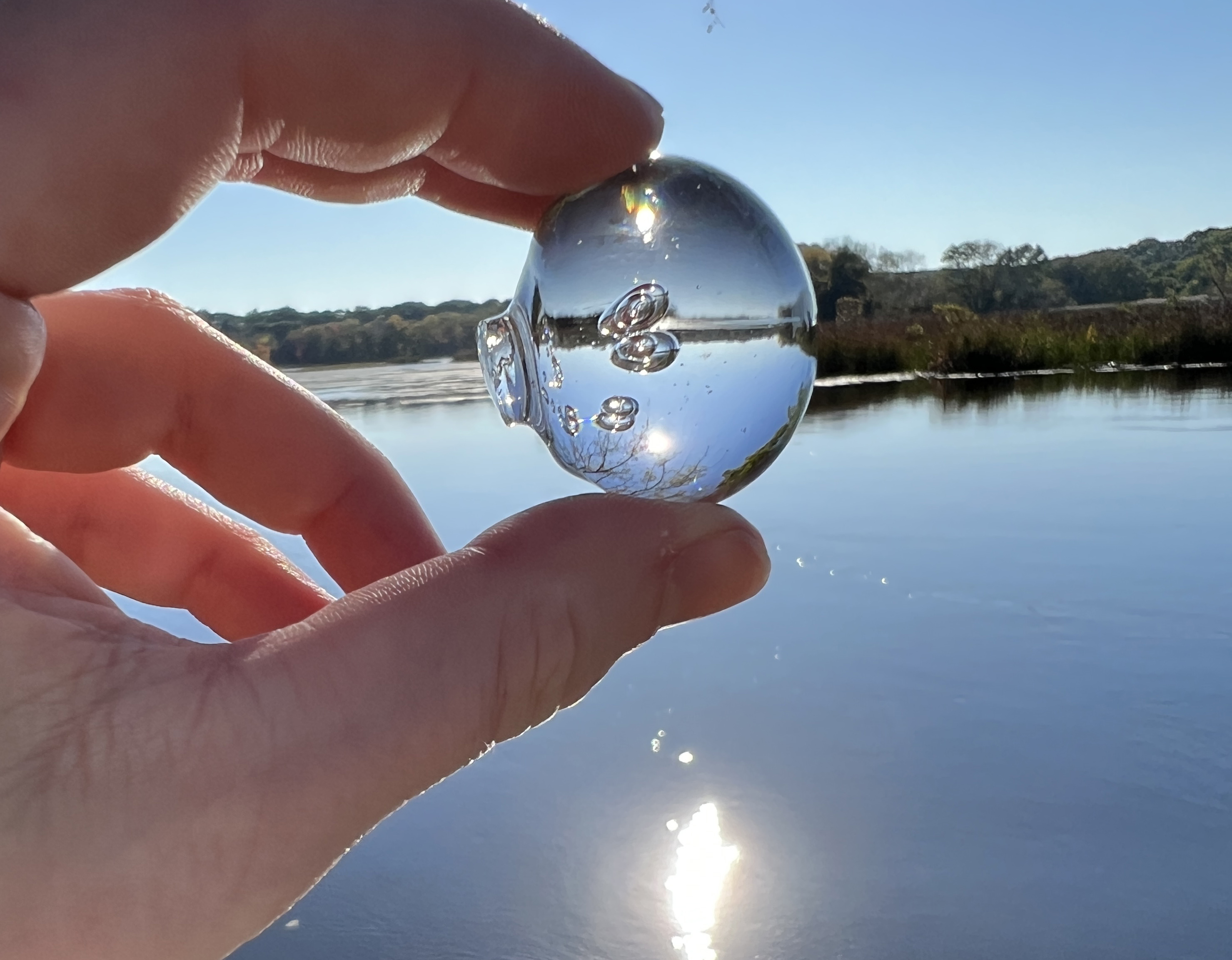
Students began considering how to incorporate such low-fi tech into self-sufficient building plans by visiting the site for their proposed structures: a complex of old, repurposed mill buildings in Cumberland, RI located at the edge of the Valley Pond and the Valley Marsh of the Blackstone River. Although the riverbank provides stunning natural views, the water itself is actually polluted with toxins and heavy metals dating back to textiles manufacturing plants of the 1800s.
Today, the site is home to the Blackstone Valley Emergency Food Center and the Blackstone River Glass Center, a collaborative and educational woodshop, metal shop and glass-blowing studio headed up by artists Rebecca Zhukov and Terence Dubreuil. The pair welcomed RISD students for a tour, after which the class took photos and made sketches of the site.
“Your goal should be more about capturing your perceptions of the site than actual measurements and data,” Briggs advised the group. “How do the buildings frame space? What is the quality of the interior space and how does it interface with the river? How does the sun move during the day?”
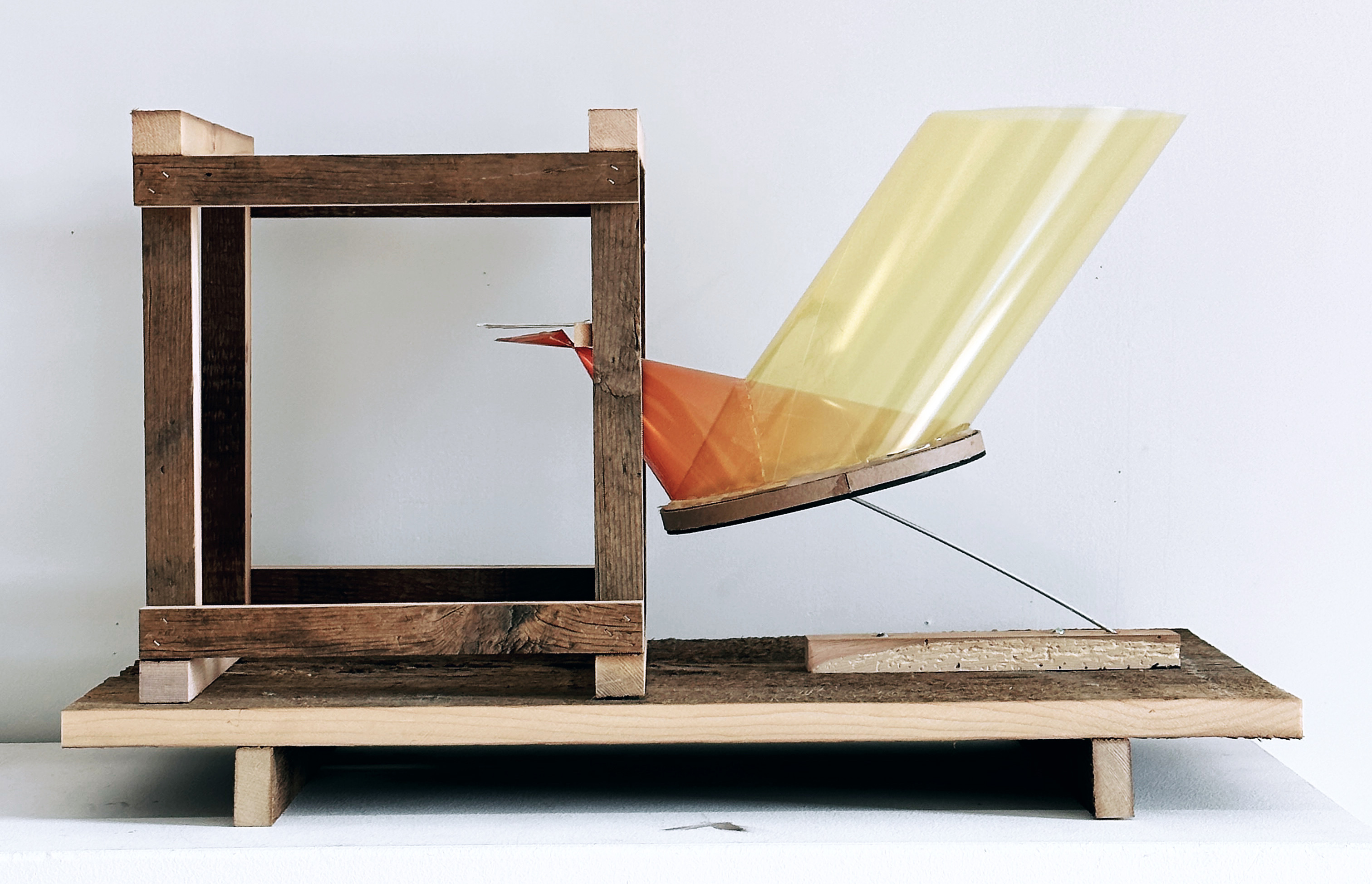
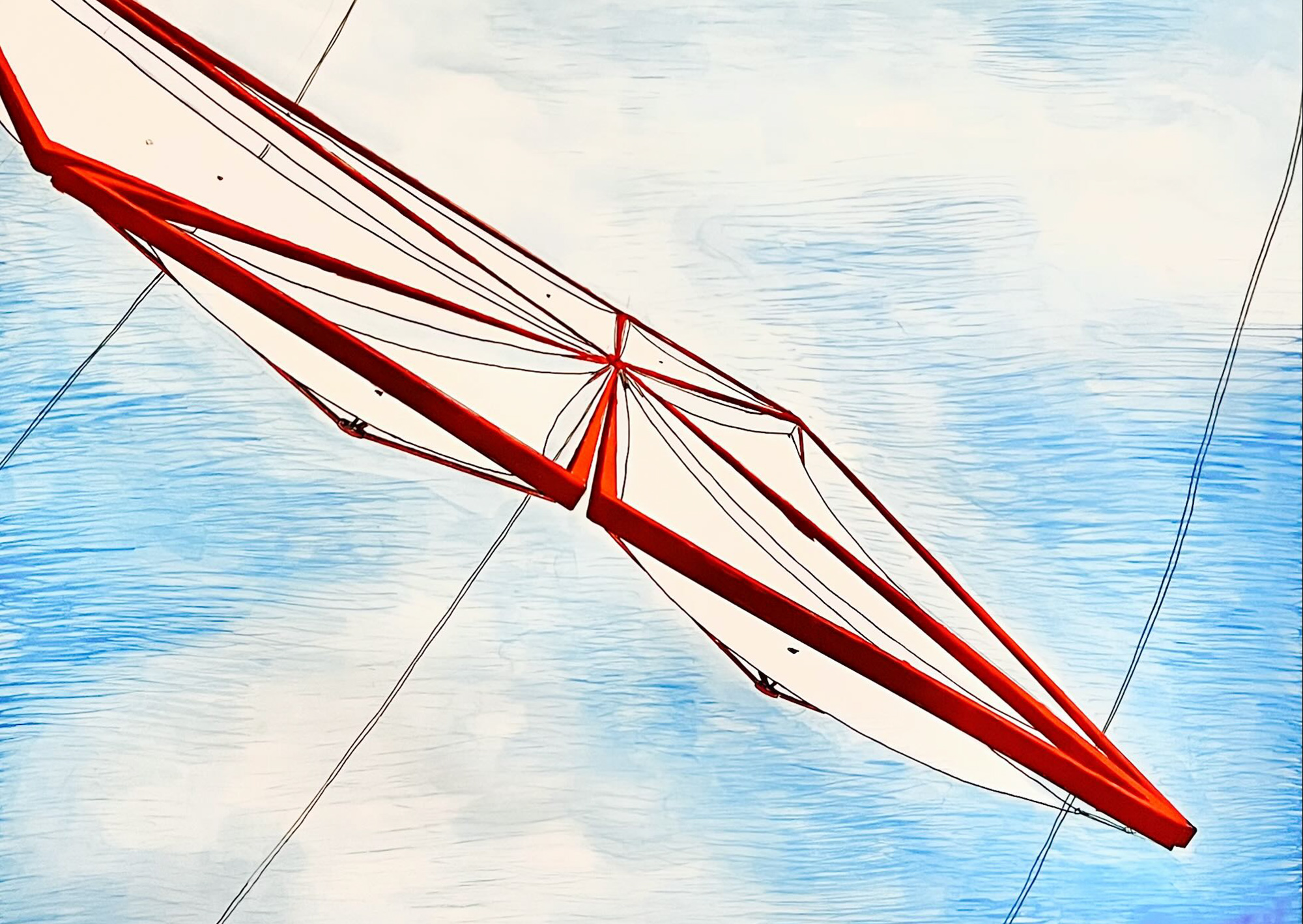
Ray Ho BArch 25 and Eva D’Oleo Pena BArch 25 strode through the grass holding mirrors that they used to bounce the sunlight from one spot to the next (see top photo). “Our goal is to learn how to recognize our spatial/temporal relationship with the sun, using mirrors and thermal mass to optimize solar energy in our structures,” Ho explains. “Throughout the semester we have been intertwining our architectural designs with the sun, exploring the profound impact of solar power on building design.”
Grad student Greg Goldstone MArch 24 was inspired by sun dials of the past and is working on a building oriented toward the sun that collects light via two rooftop reflectors. Undergrad Gavriel Faigenblat BArch 25 is designing a three-story building made of terra cotta blocks that collect sunlight and also keep the interior cool in summer months, and grad Aleza Epstein MArch 24 is building on historical solar furnace designs to inform an amphitheater that collects sunlight.
“As far as energy sources go, focused solar heat is ancient and potentially everlasting,” says Epstein. “In this studio we are stripping back the layers and starting with simple technology: the mirror.”
“We have been looking at early designs based on a long and mostly forgotten history of spectacular experiments with mirrors, sun and steam.”
As the end of the semester approached, Briggs invited guest critics into the studio to help the class focus their ideas. Architecture Professor Gabriel Feld appreciated the details that the students provided but advised them to step back from their research in order to more clearly present their central ideas to outside critics. Faculty member Lafayette Cruise was taken with Goldstone’s building and its use of parabolic geometry. “It’s interesting to return to simple geometry like this,” he noted, “and it’s exciting to see you experimenting with scale and time.”
Briggs is excited to see how introducing the concept of solar reflectors has spurred students to think outside of the proverbial box. “We’re always asking them to consider things like materials, architectural vistas and a site’s history,” she explains, “but shifting the focus to phenomena and sensory experiences related to the sun has really opened things up.”
Simone Solondz / top photo by Isabel Roberts
December 8, 2023
